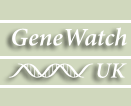The Cartagena Protocol on Biosafety regulates the environmental safety aspects of international trade of GMOs, although these are referred to as ‘Living Modified Organisms’ (LMOs) in the Protocol. Because it deals with trade and the environmental impacts of GMOs, it is directly relevant to the WTO and its SPS Agreement, which requires a risk assessment consistent with international rules or guidelines. However, questions remain over which agreement has superiority – should trade liberalisation and the WTO be dominant or environmental protection and the precautionary approach of the Cartagena Protocol?
The Protocol was agreed in 2000 by member countries of the Convention on Biological Diversity and came into force on 11th September 2003 after 50 countries had ratified it. The first Meeting of Parties (made up of those countries who have ratified the Protocol) took place in February 2004. The Protocol requires anyone wishing to export a GMO into another country to gain the permission of the importing country under a procedure known as Advance Informed Agreement (see flowchart). There are some exceptions however. For instance, LMOs which are intended for food, feed or processing (LMO-FFPs), rather than growing, have to comply with a less rigorous notification system. Also, pharmaceutical GMOs are not covered if there are other international agreements that apply to them, and neither are GMOs in transit or intended for contained use in a laboratory. A Biodiversity Clearing-House has been established to collect and disseminate information about decisions on imports .
In many ways, the Cartagena Protocol is a very progressive piece of international law. It puts the precautionary principle into operation by explicitly stating that: “Lack of scientific certainty due to insufficient relevant scientific information and knowledge regarding the extent of the potential adverse effects of a living modified organism ….shall not prevent that Party from taking a decision, as appropriate, …to avoid or minimise such potential adverse effects” (Article 10). This means that countries should be able to ban or have strict controls on GMOs even if harm has not been proved to have occurred but the potential for it exists. The precautionary principle applies when there are potentially serious or irreversible threats to the environment and is enshrined in Principle 15 of the Rio Declaration adopted in 1992 at the UN Conference on Environment and Development. It is intended to prevent the claim that science is uncertain or that there is ‘no evidence’ of harm being used to obstruct measures to prevent harm arising.
Despite its strengths, there are also some weaknesses in the Cartagena Protocol. Most obvious is the limited notification required for LMO-FFPs (Article 11). This separate, less rigorous system only requires countries to notify the Clearing-House when they have made decisions about allowing the use of a GMO in their own country and to supply certain information about it. Gaining explicit agreement from each country that the LMO-FFP may then be imported to is not required, although countries may still decide not to allow imports. This exemption from Advance Informed Agreement was negotiated by the ‘Miami Group’ – the GMO exporting countries, including the USA, Canada, Argentina and Australia, who had most to gain from weak regulations in this area.
However, the Cartagena Protocol does allow countries to have their own national requirements for the import of LMO-FFPs – which is the approach adopted in Europe, where all releases of GMOs have to be given specific approval. There is also no strict format for the risk assessment to be followed in evaluating imports of GMOs, just that they be defensible and consider the areas included in Annexes to the Protocol – these include identifying any characteristics of the GMO which may harm the environment and how the GMO will be used. It would therefore appear that the Cartagena Protocol endorses the approach taken by Europe. Since Article 23 of the Protocol calls for the promotion and facilitation of public participation in issues surrounding trade in GMOs, the improved public consultation procedures in the revised Deliberate Release Directive and attention to the views of the public in Europe are also consistent.
You can read more about the Cartagena Protocol on Biosafety on the website of the Convention on Biodiversity.
Implementation in the EU
The UK is a Party to the CPB and the relevant requirements are implemented in the EU by Regulation (EC) 1946/2003 on transboundary movement of genetically modified organisms. The Regulation requires that the exporter ensures notification, in writing, to the competent authority of the Party or non-Party of import prior to the first intentional transboundary movement of a GMO intended for deliberate release into the environment. The notification must contain the information specified in Annex I, which includes a previous and existing risk assessment report consistent with Annex II of Directive 2001/18/EC (the EU Directive covering deliberate releases of GMOs) and the exporter is required to ensure the accuracy of the information contained in the notification (there is no independent check or regualtory oversight of this). The Regulation requires the exporter to send a copy of the notification documents to the competent authority of the Member State from which the GMO is exported and to the European Commission, which must make these documents available to the public in accordance with the Community rules on access to environmental information (allowing for some aspects to be withheld on grounds of commercial confidentiality). The Genetically Modified Organisms (Transboundary Movements) (England) Regulations 2004 implement this EC Regulation in England, making the Department of the Environment and Rural Affairs (Defra) the competent authority.
